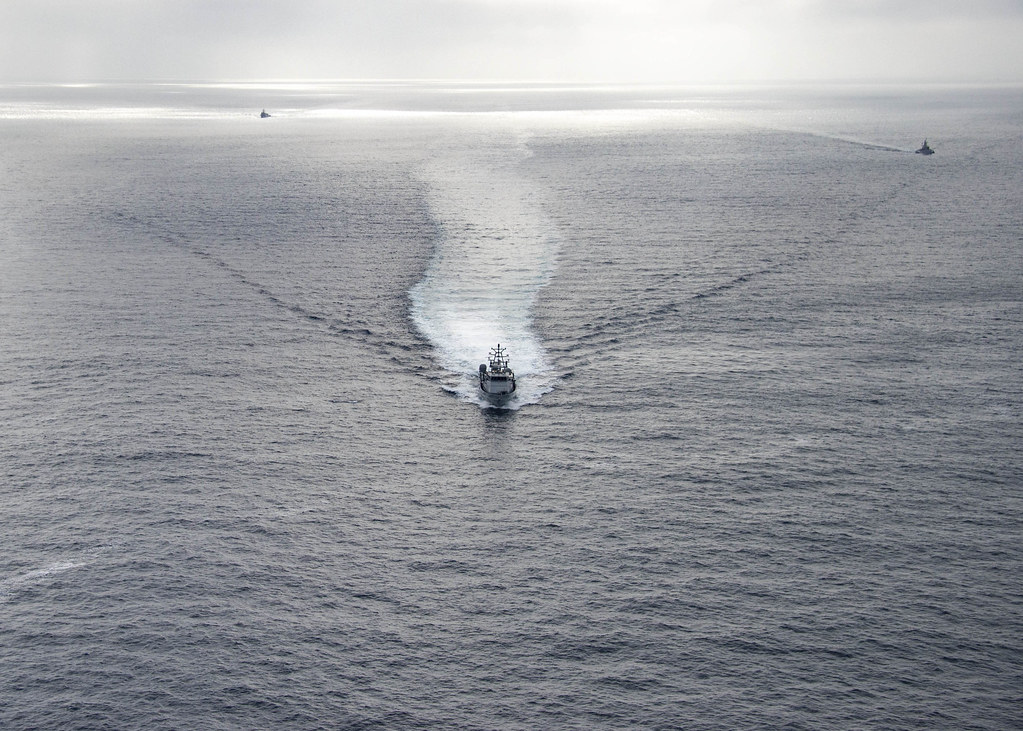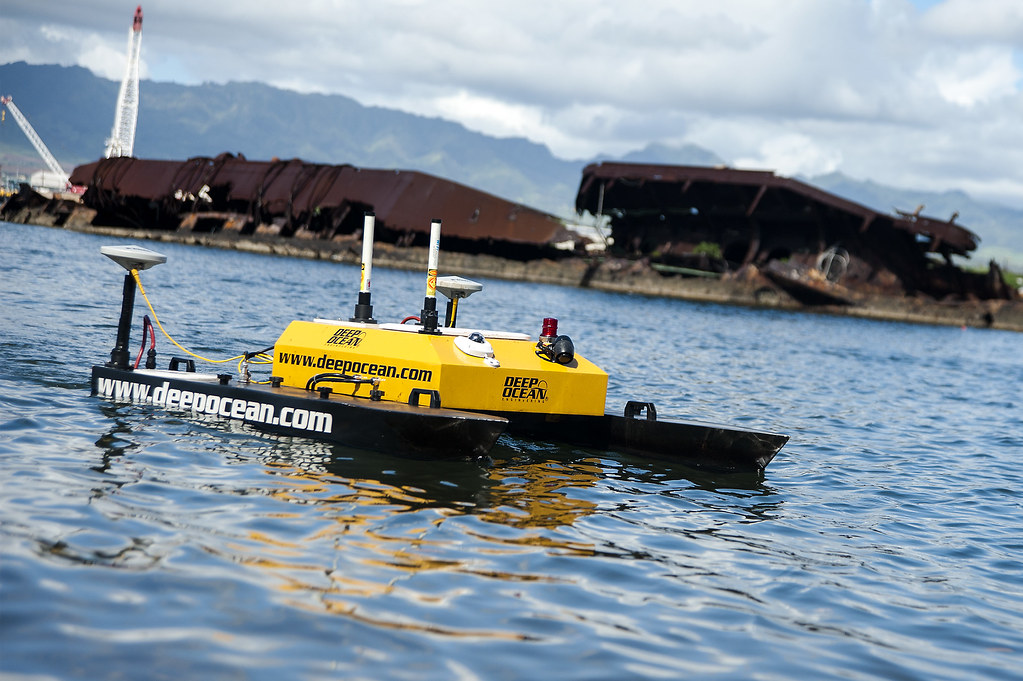
The vanguard of a force typically leads the charge, setting new precedents and heralding change. This is precisely the role of the U.S. Navy’s latest technological leap forward—the Vanguard Unmanned Surface Vessel (USV). Recently christened in Mobile, Alabama, the Vanguard marks a pivotal shift toward a new era of naval warfare, where autonomous operations may play a crucial role in bolstering the United States’ strategic capabilities.

As the first purpose-built USV, designed for autonomy from the keel up, the christening of Vanguard is more than just a traditional naval ceremony—it’s a statement of future intent.

Jointly developed by Austal USA and L3Harris, this vessel is the embodiment of cutting-edge technology and an indicator of the Navy’s commitment to evolving its fleet.

According to Capt. Scot Searles, Unmanned Maritime Systems program manager, “Vanguard’s name could not be more fitting. The state-of-the-art technology she will employ is revolutionary and will be at the forefront of establishing new standards for our fleet.”

Vanguard is the newest addition to the Navy’s Unmanned Surface Vessel Division One (USVDIVONE), where it will join sister ships Ranger and Mariner after completion of outfitting and testing. This fleet is responsible for the experimentation and tactical development of autonomous naval vessels.

Rear Adm. Kevin Smith, the Navy’s program executive officer for the Unmanned and Small Combatants program, underscored the significance of this development, stating that “Vanguard represents a significant leap forward in unmanned technology.” The addition of such a vessel will “enable the expansion of unmanned testing, experimentation, and development, accelerating the transition to the hybrid fleet.”

The Overlord program, which Vanguard is part of, is critical in accelerating the adoption of unmanned technology across the sea service.

As the Navy grapples with the challenges of maintaining a large surface fleet and a shortage of sailors, smaller, faster-to-build uncrewed vessels like Vanguard might be the key to efficiency and strategic depth.

The program aims to prepare for the widespread adoption of USVs in operations, driving the development and requirements for the Large USV (LUSV) program, which envisions low-cost, modular vessels capable of a variety of mission payloads and longer deployments without large crews.

Vanguard is not just a step forward; it’s also a response to a strategic necessity.

The U.S. Navy is currently facing a 600:1 budgetary discrepancy between manned and unmanned procurement.

In a time when traditional shipbuilding continues to dominate Navy budgets, Vanguard’s role is to demonstrate the viability and strategic advantage of unmanned platforms, as reflected in the Department of Defense’s Replicator program, which calls for cost-effective, unmanned platforms that can be produced en masse.

However, the path toward a predominantly unmanned fleet is fraught with challenges, both technical and political. As noted by Philipp Stratmann, CEO of Ocean Power Technologies, “At some point, you hit the D.C. problem,” referring to the military-industrial complex’s influence and the intricacies of how defense contracting operates within the Department of Defense (DoD).

Nevertheless, the US Navy’s drive toward autonomy and Vanguard’s christening as the first purpose-built USV is a significant milestone in naval history.

The operational capabilities of Vanguard and its siblings could redefine naval warfare strategy and demonstrate the importance of integrating unmanned systems into the existing fleet—a strategic move that might alter the face of naval engagements in the decades to come.
Relevant articles:
– Meet The U.S. Navy’s Vanguard: The First Purpose-Built USV, The National Interest
– U.S. Navy Christens its First Fully Purpose-Built “Overlord” USV, The Maritime Executive
– U.S. Navy Christens Newest Unmanned Surface Vessel, Vanguard, United States Navy (.mil)
– U.S. Navy Launches its First Purpose-Built Midsize USV, The Maritime Executive

